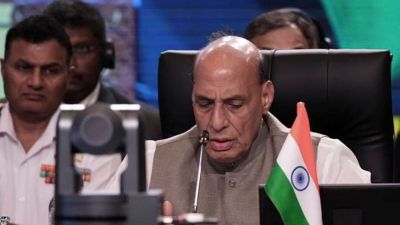Swordsplay in the dark
With regard to the US-India nuclear deal, India’s paranoid class sees enemies where none exists

Despite the carping from what can only be characterised as India’s paranoid class, the US-India nuclear deal represents a great opportunity for India to change its relations with the global nuclear order. Most of the objections raised by the paranoids are fictional or inconsequential.
The most overlooked aspect of the US-India nuclear deal is that it is not just a ‘US-India’ nuclear deal. This is a deal between India and the global non-proliferation order. What it seeks to do is to modify the global rules of the game to benefit just one country: India. The current global rules do not permit any nuclear cooperation between India and the rest of the world because India is technically a non-nuclear state which refuses to accept full-scope safeguards — safeguards on all nuclear facilities in return for any nuclear transaction.
The new rules permit India to continue with its nuclear weapons programme but nevertheless transact with the rest of the world. It represents a victory for India.
Moreover, this is a deal that only the US can swing. Both France and Russia would love to change the current non-proliferation rules so that they could supply India with nuclear plants. Neither can do so because they just do not have the international political clout to change these rules or even to ignore them. And the changes in these rules will only benefit India: both Pakistan and even Israel, the other two nuclear hold-outs, will still be out in the cold.
This is why Pakistan is apoplectic, the non-proliferation fundamentalists are enraged, and the Chinese are working feverishly to undermine efforts to change the rules in the Nuclear Suppliers Group (NSG). But it appears that they worry too much: if the Indian paranoid class has its way, India will once again snatch defeat from the jaws of strategic victory.
Many of their objections to the deal are simply fictional. The provisions in the new US law that the critics of the deal find most objectionable are included in section 103 of the Bill as ‘Statements of Policy’ rather than as legal conditions. The US Congress does not make US foreign policy, which is the prerogative of the president. Critics of the deal have pointed to the few rare cases when the US Senate has refused to ratify international treaties to suggest that the Congress controls US foreign policy, a deliberate misrepresentation. Indeed, President Bush has explicitly stated that section 103 will be taken as purely advisory.
Another fictional issue is the US-India scientific cooperation on nuclear non-proliferation, section 109 of the Bill, which, it is argued, forces India to cooperate with the US on non-proliferation technologies. But that section only authorises the setting up of such a programme, it does not require such a programme. As the explanatory statement points out “Section 109 is not intended to create an obligation for India to meet.”
The congressional leaders have reiterated the boilerplate about capping, reducing and eliminating South Asian nuclear programmes. But they also note in their explanation that they “understand that US peaceful nuclear cooperation with India will not be intended to inhibit India’s nuclear weapons programme”, which appears not to have caught the eye of the critics despite their close reading of documents. Again, in their explanation of section 104(a)(2), which deals with waiver of sanctions, they note that “This waiver will be necessary because India will presumably continue to produce material for its nuclear weapons programme, consistent with its separation plan.” Both points have been carefully ignored by critics of the deal in India.
Instead, they have harped on inconsequential prestige issues. One relates to prohibition on export of US enrichment and reprocessing technologies. But India has already developed both reprocessing and enrichment technologies indigenously and we are not even shopping for them. Should we worry if they refuse to sell us things we are not even seeking?
Another issue relates to safeguards. The legislation provides for ‘fall-back safeguards’, that is, should the IAEA be unable to conduct its safeguards, some alternate provisions should be made for ensuring safeguards on technology that the US has transferred to India. The critics have not stated why this should be an issue considering that these safeguards are only on facilities that have been declared as civilian by India, and in no way affects India’s nuclear military facilities.
The only consequential item in these objections is the issue of further nuclear tests, which will end nuclear cooperation and require India to return the materials it received from the US. But note that once the NSG rules are modified, France and Russia are likely to have a greater role in the Indian nuclear power programme than the US and neither are likely to pull out, which itself should be a deterrent to the US pulling out.
The government needs to continue emphasising that India retains its options to test. It is essential to be careful about international politics, but these paranoids have no real enemies.
The writer is associate professor of international politics, JNU, New Delhi






- 01
- 02
- 03
- 04
- 05
























